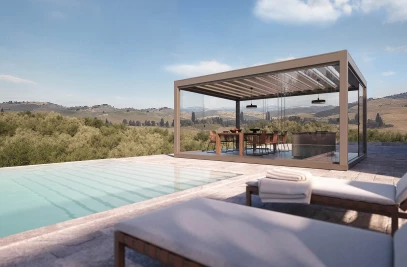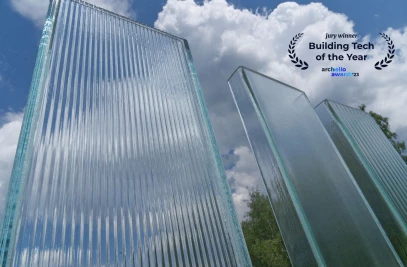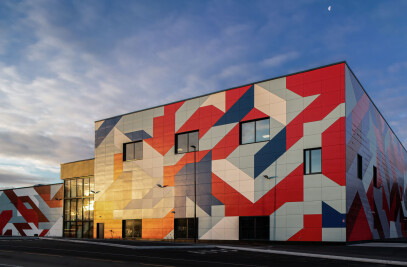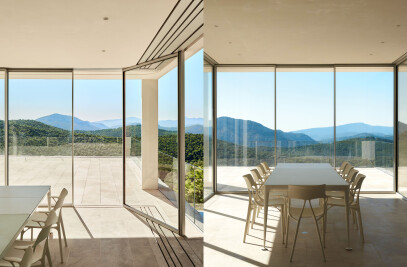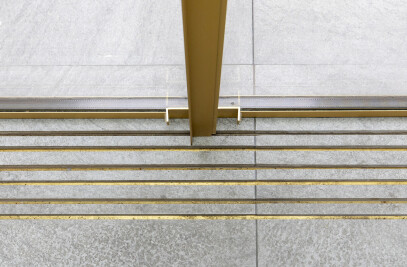The D-Day Museum in Arromanches-les-Bains, France, recently unveiled a new facility designed by Paris-based design studio Projectiles. The redevelopment project marks a significant milestone for the first museum dedicated to the Normandy landings.
The museum's new design establishes a strong connection to its surrounding environment. Located on a natural wedge in Normandy, the site offers sweeping views of the English Channel and the remnants of the temporary Mulberry harbor constructed during World War II by the British. Projectiles conceived the building as a 'landscape museum,' embedding it into a broader museum system extending along the cliffs and across the horizon. Its positioning and design emphasize the interplay between the natural topography, historical significance, and the built environment.
The architectural approach ensures that the museum functions as an observatory, inviting visitors to engage with the site's layered history and geography. Its integration within the landscape provides framed views from multiple vantage points, fostering a dialogue between the museum's exterior and interior spaces.
The structure adopts a restrained architectural language, characterized by simple volumetric forms and structural precision. A 4-meter-deep and 8-meter-high awning spans the building's length, providing a distinct entryway from the Place du 6 Juin 1944.
Prefabricated concrete columns, inspired by the modular design of the existing harbor elements, form the building's exoskeleton. These columns are paired with expansive glazed façades, creating a transparency that visually connects the museum's exhibitions to the surrounding landscape.
Internally, the design features a longitudinal fracture measuring 16 meters by 4 meters, running through the core of the building. This element mirrors the proportions of the caissons of the artificial harbor. The fracture is complemented by a floating footbridge that leads visitors through the exhibit spaces. The interior layout incorporates wide circulation paths along the facades, accommodating high visitor flows while offering panoramic views. These paths support functional movement and also invite reflective engagement with the site.
Museographic approach
The exhibition design balances historical narrative with experiential engagement. Visitors begin their journey in a subdued multi-level space featuring an introductory film that contextualizes the Normandy landings. From there, the exhibition unfolds chronologically and thematically, beginning with the lead-up to World War II and culminating in the liberation of Europe.
A centerpiece of the museographic experience is a 1:750 scale model of the harbor. Accompanied by video projections, the model illustrates the harbor's engineering, operational mechanics, and strategic significance during the summer of 1944. This detailed representation provides visitors with a comprehensive understanding of the harbor's role in the Allied invasion.
Public and commemorative spaces
The museum's public spaces extend its role beyond a traditional exhibition venue. The forecourt, connected to the Place du 6 Juin 1944, offers a platform for daily use and commemorative events. Designed to accommodate large gatherings, it provides views of the tide as it reveals remnants of the artificial harbor. To the east, a new wooded area enhances the public realm, integrating seamlessly with the shoreline promenade and nearby streets.
The landscaping strategy addresses the site's steep topography while improving accessibility. The diagonal orientation of the additional stands enhances the promenade, creating direct connections between the forecourt, the museum, and the surrounding urban fabric.














































